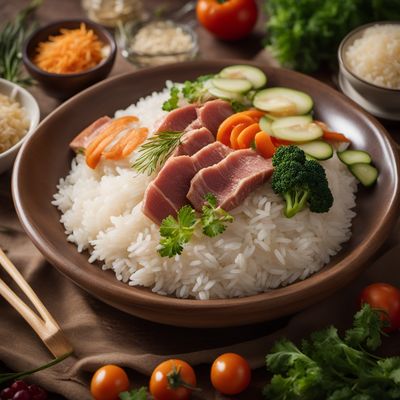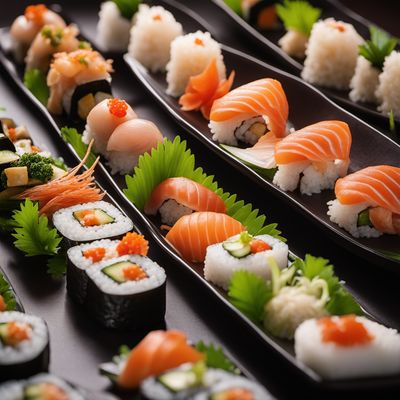
Ingredient
Risotto
Creamy Delight: Unveiling the Magic of Risotto
Risotto is a traditional Italian rice dish made by slowly cooking Arborio or Carnaroli rice in broth until it reaches a creamy consistency. The grains of rice are toasted in butter or oil before being gradually cooked with broth, resulting in a dish that is creamy yet al dente. Risotto has a luxurious mouthfeel and can be flavored with a wide range of ingredients such as vegetables, seafood, or cheese. Its versatility allows for endless variations and creative combinations.
Origins and history
Risotto originated in Northern Italy, particularly in the regions of Lombardy and Piedmont. It is believed to have been introduced during the Middle Ages when rice cultivation began in the Po Valley. Initially, rice was considered a luxury ingredient and was primarily consumed by the wealthy. Over time, risotto became a staple dish in Italian cuisine and gained popularity across the country and beyond.
Nutritional information
Risotto is a good source of carbohydrates and provides essential nutrients such as iron, magnesium, and B vitamins. A typical serving of risotto contains around 200-300 calories, depending on the ingredients used.
Allergens
Risotto may contain allergens such as dairy (if cheese is added), shellfish (if seafood is included), or gluten (if using certain broths or additives).
How to select
When selecting risotto rice, look for Arborio or Carnaroli varieties, as they have the ideal starch content to achieve the desired creamy texture. Choose rice that is plump, with no signs of moisture or discoloration. Opt for reputable brands or specialty stores to ensure quality.
Storage recommendations
Store risotto rice in an airtight container in a cool, dry place to maintain its freshness. Once cooked, leftover risotto should be refrigerated promptly and consumed within 2-3 days.
How to produce
While it is challenging to produce rice for risotto on a small scale, enthusiasts can try growing short-grain rice varieties like Arborio or Carnaroli in paddy fields or containers with proper water management and temperature control.
Preparation tips
To prepare risotto, start by sautéing onions or shallots in butter or oil until translucent. Add the rice and toast it for a minute before gradually adding warm broth, stirring constantly until the liquid is absorbed. Repeat this process until the rice is cooked but still slightly firm in the center. Finish by stirring in grated cheese, butter, or other desired ingredients. Remember to be patient and stir frequently to release the rice's starch and achieve the desired creaminess.
Substitutions
Arborio or Carnaroli rice can be substituted with short-grain rice varieties like sushi rice or even medium-grain rice, although the texture may differ slightly. However, the unique creaminess of risotto may be challenging to replicate with other grains.
Culinary uses
Risotto is a versatile dish that can be enjoyed as a main course or served as a side dish. It pairs well with a variety of ingredients such as mushrooms, asparagus, seafood, or even fruits like strawberries for a unique twist. It is commonly used in Italian cuisine but has also been adapted and incorporated into various international dishes.
Availability
Risotto is commonly available in grocery stores and supermarkets worldwide, especially in regions with a strong Italian culinary influence.
More ingredients from this category

Rice pudding
Creamy Delight: Exploring the World of Rice Pudding

Milk rice
Creamy Delight: Exploring the Richness of Milk Rice

Paella
The Iconic Spanish Delight: Paella

Dolma
Delightful Stuffed Goodness

Rice and vegetables meal
Harmony on a Plate: Rice and Vegetable Medley

Rice, meat, and vegetables meal
Wholesome Harmony: A Nutrient-Rich Medley of Rice, Meat, and Vegetables

Rice, fish/seafood and vegetable based dishes
A Symphony of Flavors: Exploring the Delights of Rice, Fish/Seafood, and Vegetable Based Dishes

Nasi goreng
"Indonesian Delight: Exploring the Flavors of Nasi Goreng"

Rice and meat meal
Savory Rice Delight